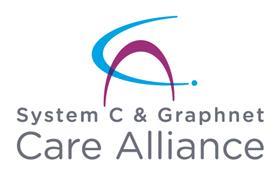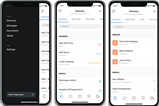The next generation of record sharing is under way, with cross-community care planning and team collaboration reducing pressure on acute services
Information-sharing across a care community is a fundamental requirement for every sustainability and transformation plan. Most STPs and digital roadmaps acknowledge the immediate benefits of sharing records – faster and safer care, less time asking for or ringing round for information, more joined up services and so on.
Yet not all appreciate that we are now moving to an exciting new phase, where integrated digital records help deliver service reconfiguration by supporting new workflows, new models of care and the redesign of the relationship between patient and care professional.
We’ve come a long way in record sharing over the last few years. With comprehensive records installed or in deployment in places such as Cheshire, Berkshire, Manchester and Nottinghamshire, it is estimated that over a third of the country will have access to shared records by the end of the year. Long gone the days when the Hampshire Health Record was the UK’s only shared record.
A quick look at the Cheshire Care Record demonstrates the scale of some of these projects. Information is combined from three acute trusts, two specialist cancer trusts, two community trusts, one mental health trust, 93 GPs and four clinical commissioning groups.
‘We are moving to an exciting new phase, where integrated digital records help deliver service reconfiguration by supporting new workflows, new models of care and the redesign of the relationship between patient and care professional.’
However, the really big benefits will come as STPs adopt the next generation of shared record services. Systems now support multi-disciplinary and multi-provider care plans which can do a lot to reduce A&E attendances and emergency admissions.
Secure integrated messaging services allow teams, clinicians and even patients to ask for advice and collaborate. Task management provides cross care community workflow. Cross-community alerting can be used to let a social worker or community nurse know if a patient is admitted, deteriorates or dies.
So at Poole Hospital, for example, patients with epilepsy are piloting a new app that monitors their health and wellbeing using wearable and mobile technology. Care teams are alerted to significant changes in health in real time and data is analysed using algorithms to predict levels of seizure risk and help reduce readmissions.
In another example, integrated care planning for people with long term conditions and/or complex needs has led to an 8 per cent reduction in hospital activity, and cuts of 19 per cent and 15 per cent in A&E attendances and emergency admissions.
Another site is using the shared record to drive a live bed state across a care community including acute, community and hospice beds.
Many shared records are moving to this new level of functionality now, so in 2017 we will start seeing documented use cases and benefits studies. Our health and social care services are finally getting the technology they need to support cross-organisational working.
Markus Bolton is a director of System C and Graphnet. Visit www.graphnethealth.com and www.systemc.com for more information.




































No comments yet